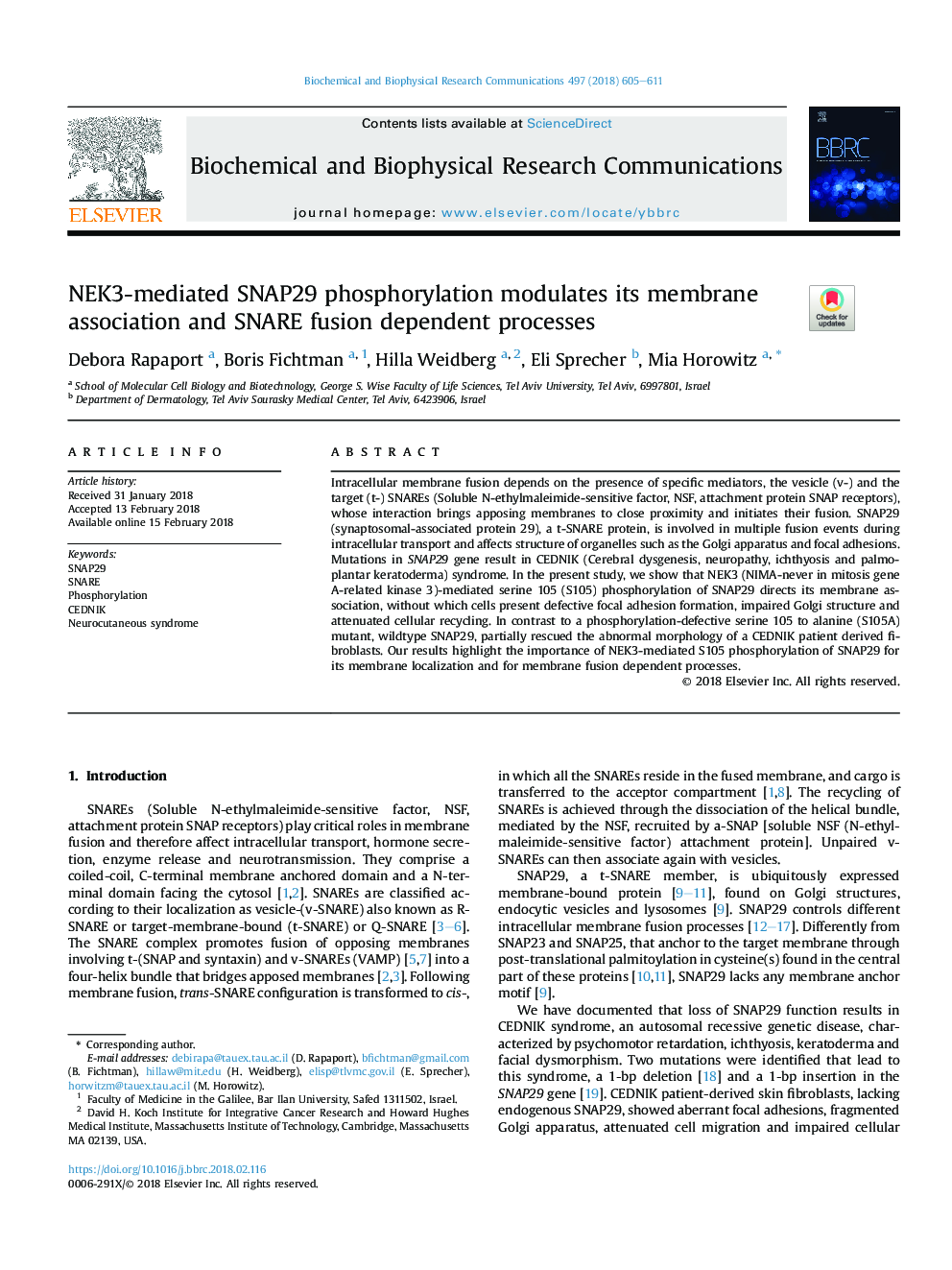| Article ID | Journal | Published Year | Pages | File Type |
|---|---|---|---|---|
| 8294001 | Biochemical and Biophysical Research Communications | 2018 | 7 Pages |
Abstract
Intracellular membrane fusion depends on the presence of specific mediators, the vesicle (v-) and the target (t-) SNAREs (Soluble N-ethylmaleimide-sensitive factor, NSF, attachment protein SNAP receptors), whose interaction brings apposing membranes to close proximity and initiates their fusion. SNAP29 (synaptosomal-associated protein 29), a t-SNARE protein, is involved in multiple fusion events during intracellular transport and affects structure of organelles such as the Golgi apparatus and focal adhesions. Mutations in SNAP29 gene result in CEDNIK (Cerebral dysgenesis, neuropathy, ichthyosis and palmoplantar keratoderma) syndrome. In the present study, we show that NEK3 (NIMA-never in mitosis gene A-related kinase 3)-mediated serine 105 (S105) phosphorylation of SNAP29 directs its membrane association, without which cells present defective focal adhesion formation, impaired Golgi structure and attenuated cellular recycling. In contrast to a phosphorylation-defective serine 105 to alanine (S105A) mutant, wildtype SNAP29, partially rescued the abnormal morphology of a CEDNIK patient derived fibroblasts. Our results highlight the importance of NEK3-mediated S105 phosphorylation of SNAP29 for its membrane localization and for membrane fusion dependent processes.
Related Topics
Life Sciences
Biochemistry, Genetics and Molecular Biology
Biochemistry
Authors
Debora Rapaport, Boris Fichtman, Hilla Weidberg, Eli Sprecher, Mia Horowitz,
